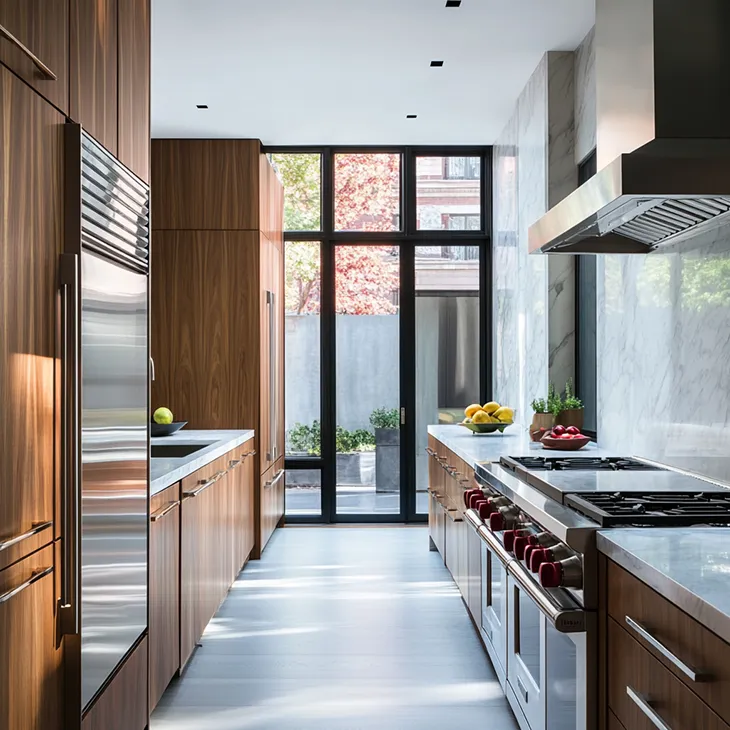
Upgrading your home is an exciting journey. Whether you’re envisioning a sleek modern kitchen, a cozy reading nook, or a complete home transformation, renovations have the power to enhance both comfort and property value. But, as every homeowner quickly realizes, bringing a dream space to life requires more than creativity – it takes funding.
For many, figuring out how to finance home improvements can feel overwhelming. Should you dip into savings? Take out a loan? Leverage your home’s equity? The good news is that multiple financing options exist to fit different budgets and project sizes. Understanding them can help you make a smart financial decision while turning your renovation dreams into reality.
Setting a Realistic Budget for Home Upgrades
Before diving into financing options, the first step is budgeting wisely. Home renovations can range from small cosmetic changes to full-scale remodels, and costs can escalate quickly. Knowing how much you need – and how much you can afford – prevents financial strain down the line.
Start by estimating costs for materials, labor, permits, and any unexpected expenses. If you’re hiring a contractor, get multiple quotes to ensure you’re paying a fair price. Home improvement projects often run 10-20% over budget, so it’s smart to build a cushion for surprises. Prioritize upgrades that add value, such as kitchen remodels, bathroom renovations, or energy-efficient enhancements, while being mindful of costs.
Once you have a budget in place, it’s time to explore the different ways to finance your home improvements.

Traditional Financing Options for Home Renovations
For those with savings, paying cash is the simplest way to fund renovations. It eliminates interest rates, monthly payments, and long-term financial commitments. But not everyone has the ability to cover major projects upfront. That’s where financing comes in.
A personal loan is a common choice for mid-sized renovations. These loans offer quick access to funds with fixed monthly payments, making budgeting predictable. However, they often come with higher interest rates compared to secured loans, since they don’t require collateral.
Credit cards can also be an option for smaller projects. Many homeowners use credit for purchasing materials or hiring contractors for minor updates. If you qualify for a card with a 0% introductory APR, you can spread out payments interest-free. Just be sure to pay off the balance before the promotional period ends to avoid high interest charges.
Using Your Home’s Equity to Fund Renovations
For larger renovations, many homeowners turn to their home’s equity – the difference between what they owe on their mortgage and their home’s current value. This can be a powerful way to finance significant home upgrades.
A home equity loan provides a lump sum of money at a fixed interest rate, making it ideal for projects with a clear budget, such as a full kitchen remodel or roof replacement. With structured monthly payments, it offers predictability, much like a second mortgage.
A home equity line of credit (HELOC), on the other hand, works like a credit card. Homeowners can borrow as needed, only paying interest on the amount used. It’s a flexible solution for long-term projects or renovations that may have fluctuating costs.
For some, cash-out refinancing may be an option. This involves refinancing your mortgage for a larger amount and receiving the difference in cash. While this can provide significant funding, it also means replacing your existing mortgage with new terms, so it’s important to evaluate interest rates and long-term affordability.
If you’re considering using your home’s equity, it’s essential to compare offers and understand current market trends. For instance, homeowners looking into home equity loan rates in Massachusetts may find variations depending on their lender, credit history, and the amount of equity they have built.

Government and Specialized Financing Programs
Beyond traditional loans, several government-backed and specialized financing options exist to help homeowners renovate affordably.
The FHA 203(k) loan, for example, is designed for those buying fixer-uppers or renovating existing homes. It allows borrowers to roll the cost of renovations into their mortgage, making it an attractive option for homebuyers looking to finance both a purchase and improvements simultaneously.
For those focused on energy-efficient upgrades, programs like PACE (Property Assessed Clean Energy) financing offer funding for solar panels, insulation, and other sustainable home improvements. Additionally, many states and municipalities provide grants or low-interest loans for energy-efficient renovations, which can help reduce long-term energy costs.
Homeowners should also check for local improvement grants, which vary by state and city. Some areas offer financial assistance for historical home preservation, accessibility upgrades, or disaster-proofing measures. These programs often come with eligibility requirements, but they can significantly offset renovation costs.

Creative and Alternative Ways to Fund Home Upgrades
If traditional financing isn’t the right fit, there are alternative ways to fund your dream space.
Crowdfunding platforms like GoFundMe or Kickstarter have been used by creative homeowners to raise funds for unique renovation projects. While not common for standard remodels, they can be a way to engage the community in home transformations that have a cultural or artistic element.
Some home improvement retailers also offer in-store financing, allowing homeowners to spread the cost of materials and appliances over time. This can be helpful for renovations where purchasing high-quality materials upfront is essential.
For those looking to cut costs, DIY renovations can be a smart approach. While some projects – like plumbing or electrical work – should be left to professionals, many homeowners tackle painting, landscaping, and smaller structural upgrades on their own. Not only does this save money, but it also adds a personal touch to the renovation process.
How to Choose the Best Financing Option for Your Project
With so many options available, selecting the best financing method depends on several factors:
- Project size and scope – A minor upgrade may only require savings or a credit card, while a major remodel may justify a home equity loan.
- Repayment ability – Fixed loans offer predictable payments, while HELOCs provide flexibility.
- Interest rates and fees – Compare options carefully to avoid excessive interest costs.
- Long-term financial goals -Consider how each option affects your overall financial health.
Seeking guidance from financial advisors, mortgage specialists, or renovation consultants can help you navigate the choices and make an informed decision.
Finally, transforming your home into your dream space is an exciting process, but securing the right funding is just as important as choosing the perfect design. Whether you opt for savings, personal loans, home equity financing, or government-backed programs, there’s a solution that aligns with your needs and budget.
By planning carefully, exploring multiple financing avenues, and staying within a reasonable budget, you can bring your renovation vision to life without unnecessary financial stress. The key is finding a balance between design ambitions and smart financial planning – because the best home upgrades are the ones that enhance both your living space and your financial well-being.




















project size and scope… the first thing you need to know.